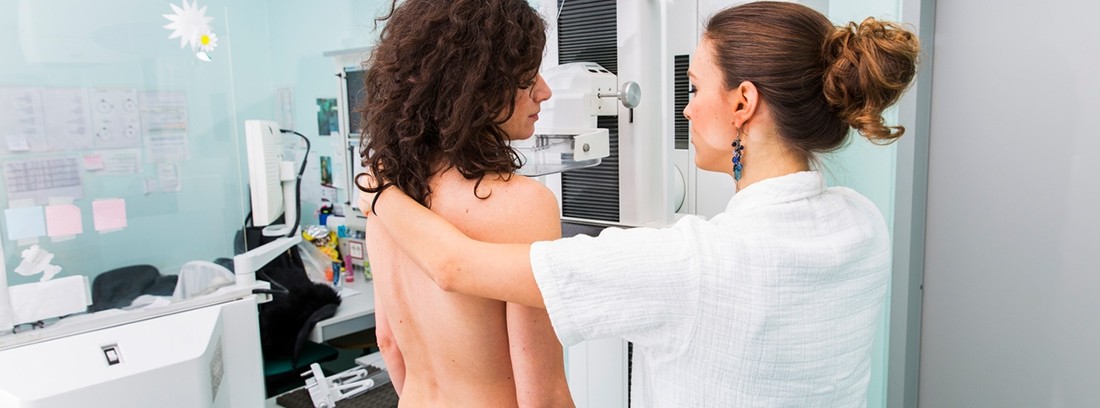Mammography

Mammography, also known as an X-ray of the breast, consists of obtaining an x-ray image of the breast. This image arises from the interposition of the anatomical area under study between an ionizing radiation emitting source (X-rays) and a radiographic plate or a digital photographic record.
What are mammograms done for?
Mammography is a fast, simple and safe test, widely used in the field of Medicine that provides very valuable information for the doctor:
- It allows the diagnosis and monitoring of multiple pathologies such as gynecomastia, fibrocystic mastopathy, mastitis, fibroma, among others.
- At the same time serves as a screening test or suspected diagnosis of multiple local or systemic processes such as inflammations, infections or that must be confirmed later with specific studies.
How is a mammogram performed?
The mammography It is performed in the radiology room of the medical center or hospital by a radiology technician. The patient should strip the anatomical area under study and a gown will be provided to cover oneself; at the same time you should remove your personal items, especially jewelry and metal objects that can interfere with radiological images.
The patient will stand during the study placing itself between the radiation emitting source and the photographic plate. The radiology technician will indicate at all times the position to adopt during the study. The number of radiographs to be performed will depend on the anatomical area to be studied and the cause for which the study is carried out.
The study it usually lasts between 10 and 15 minutes.
Once the radiological images have been obtained and developed, they will be sent to the specialist in Radiology for their evaluation and for the issuance of a radiological report for the doctor who requested the study.
Preparation for the study
The mammography it does not require prior preparation by the patient. The patient should undress the anatomical area under study and remove her personal items, especially jewelry and metal objects.
Must be avoid using creams or deodorants that can modify the radiological image.
What does a mammogram feel like?
The mammography study is painless for the patient. Some positions during the study may be uncomfortable for the patient in the case, for example, having inflammation or infection of the breast at the time of the study. The best moment to perform a mammogram in women is at the end of menstruation.
Risks and contraindications of the study
Mammography, in general, does not involve a significant risk for health as it is a very localized radiation. The type of radiation as well as the dose used follows strict safety controls and in general the benefit obtained outweighs the minimal risks of the radiation itself.
The embryo and fetus are more susceptible to radiation, so unnecessary studies should be avoided in cases of pregnancy. The pregnant woman or who suspect that it may be (including those who carry a) should avoid studying whenever possible and should tell the radiology technologist that you are pregnant before having the mammogram.
The patient should consult with her doctor before performing the mammogram in the case of:
- Pregnancy and breastfeeding
- Take some kind of medication
You have doubts? Sign up for Savia, the service platform of MAPFRE digital health that allows you to chat for free with a gynecologist to guide you on the test you should take. You can also buy one or at the best price and with the best specialists.
SIGN UP FREE
Dra. Cristina Muñoz Gil Family and Community Medicine Specialist
(Updated at Apr 14 / 2024)